How Does Duct Cleaning Work? A Step-by-Step Guide to Cleaner Air
- Revised by Jason Maxwell, CEO & Director of Operations
- January 14, 2025
Duct Cleaning Myths
Duct Cleaning Types
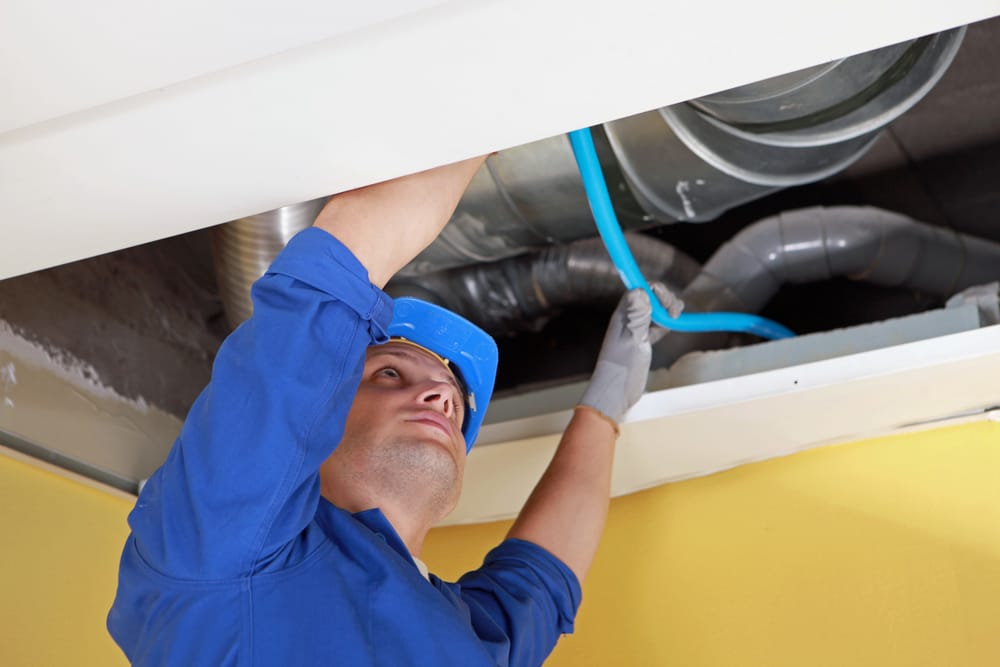
Introduction
Duct cleaning is the process of removing dust, dirt, and other contaminants from the air ducts of your home’s HVAC system. Over time, air ducts accumulate debris that can affect both air quality and system performance. Ensuring that your ducts are regularly cleaned helps maintain a healthy home environment by improving the quality of the air you breathe. Clean air ducts also allow your HVAC system to work more efficiently, which can lead to lower energy bills and longer system life. In essence, duct cleaning not only contributes to better air quality but also enhances overall system efficiency, making it an important part of home maintenance.
Summary Table Of The Work
| Aspect of Air Duct Cleaning | Description |
|---|---|
| Air Duct Cleaning Purpose | Enhances indoor air quality and HVAC efficiency by removing dust, allergens, and mold. |
| Critical Components |
|
| Steps in Cleaning Process |
|
| Techniques Required |
|
| NADCA Procedures |
|
How Does Duct Cleaning Work? (The Basics)
- Inspection: Technicians start by inspecting the ducts to assess contamination levels and identify any issues within the HVAC system, such as blockages or leaks.
- Creating Negative Pressure: A powerful vacuum is attached to the duct system to create negative pressure. This ensures that dust and debris are drawn out of the ducts without spreading back into your indoor environment.
- Dislodging Debris: Specialized tools, such as brushes and air whips, are used to loosen dirt, dust, and other contaminants from the walls of the ducts.
- Vacuuming and Vent Cleaning: The vacuum system efficiently removes all dislodged debris. Additionally, the vents are cleaned to enhance air circulation and improve indoor air quality.
- Inspection: Technicians start by inspecting the ducts to assess contamination levels and identify any issues within the HVAC system, such as blockages or leaks.
Ensure your commercial space benefits from a clean and efficient HVAC system. Book our professional commercial duct cleaning service today for healthier air and optimized system performance.
Why Should You Get Your Ducts Cleaned?
Regular duct cleaning provides several key benefits that contribute to both the health of your home and the efficiency of your HVAC system.
First, improved air quality is one of the most significant advantages. Over time, contaminants like dust, mold, pollen, and pet dander can accumulate in your ducts. These particles circulate through your home’s air, potentially causing allergies, respiratory issues, and discomfort for those with sensitivities. Cleaning your ducts helps eliminate these pollutants, ensuring the air you breathe is healthier and cleaner.
Second, cleaning your ducts can help reduce allergens and irritants. For homes with pets or occupants who suffer from allergies, having clean air ducts is essential to minimize exposure to allergens like pet hair, dander, and dust mites.
Lastly, duct cleaning boosts the lifespan and efficiency of your HVAC system. A cleaner system doesn’t have to work as hard to maintain the desired temperature, leading to less strain on its components. This can reduce energy consumption, lower utility bills, and help avoid costly repairs in the long run.
Ensure the air in your commercial space is clean and healthy while maximizing your HVAC efficiency. Book our professional commercial duct cleaning service today for a cleaner environment and improved system performance.
What Is Vent And Duct Cleaning?

Duct cleaning is a technique that is used by professional cleaners to remove any dust or other debris like mold in your HVAC system. This work is done by an expert in both cleaning and HVAC. To know more about all its details, feel free to read our article on what is duct cleaning. The system is usually the HVAC, which can include heating and cooling system.
Should You Have the Air Ducts in Your Home Cleaned?
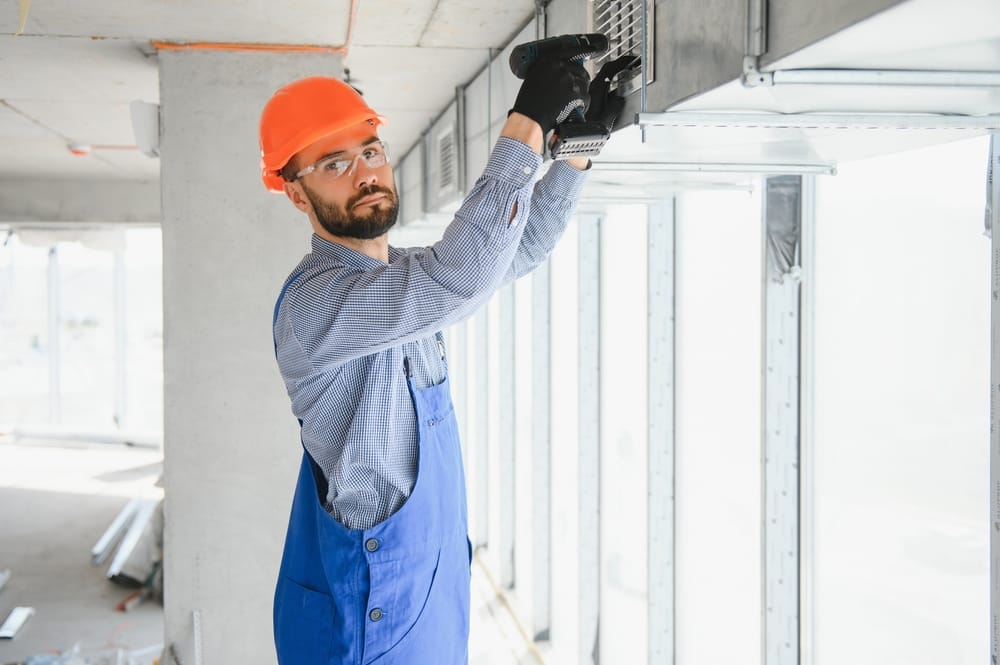
Air duct cleaning can help to prevent the health and safety of indoor environments. The job requires to remove accumulations of dust, allergens, glass, fungus and much more in some case. This way, we can help you to be sure to never breathe anything you shouldn’t. But it’s not only about what you breathe. Vents cleaning can also enhance HVAC efficiency. Cleaned air ducts allow better airflow, reducing system strain, and potentially lowering energy and repair costs.
Now we know that duct cleaning is essential for maintaining both HVAC health and possibly indoor air quality, but let’s see how the work is done!
How Do We Clean Air Ducts (Step By Step Process Explained)

1. Duct Cleaning Inspection
Our job requires an audit. This evaluation begins with a thorough examination of the ductwork system. We assess ducts and metal ducts, identifying areas where dust and debris accumulate. This helps in determining the duct surfaces’ condition, ensuring the most effective air duct cleaning evaluation phase for both residential duct and commercial spaces.

2. Preparation To Get Everything Cleaned
Before starting the air duct cleaning job, all air ducts are inspected for mold and moisture. Companies specializing in home duct and industrial duct services ensure air filters are replaced. This crucial step guarantees that the air duct cleaning operation runs smoothly, preventing pests from spreading throughout the system.
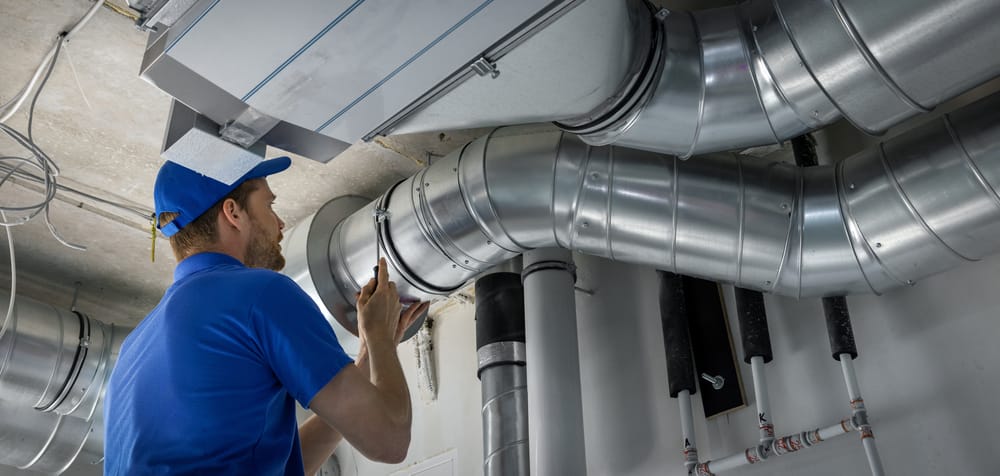
3. Create access points in the ductwork
To clean air ducts effectively, professionals create access points in the ductwork. This way, it allows them to reach deep into the air duct system and clean thoroughly through source removal. By ensuring each duct is accessible, the duct cleaning procedure becomes more efficient, resulting in cleaner air circulating throughout your home.
4. Use agitation devices to loosen dirt, dust, and debris
This air duct cleaning step requires to access the duct and vent system, then use agitation devices to loosen dirt, dust, and debris. This is essential to make sure that the duct cleaning task works thoroughly, leaving your home with cleaner air and ducts that are completely cleaned.
5. Use of vacuum to collect the dislodged debris

After dislodging debris from ducts and vents, we use powerful vacuum collection systems to clean the area thoroughly. The vacuum secure all particles and make sure thet are effectively removed from the duct during the duct cleaning process, leaving the duct and vent clean.
6. Cleaning of HVAC components
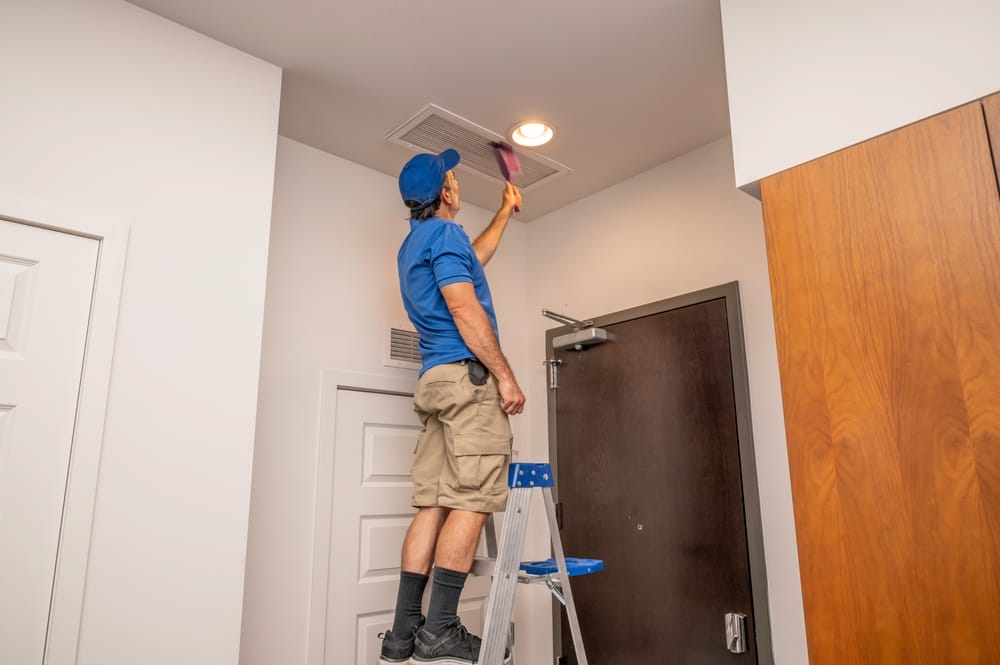
To confirm ducts are thoroughly cleaned, professionals start by accessing each duct and vent in your home. The duct cleaning work involves using advanced tools to clean and remove debris. Keep reading to check all of our required tools. This way, once every components are washed, we can sanitize the pipes!
7. Apply an antimicrobial treatment to sanitize the pipes
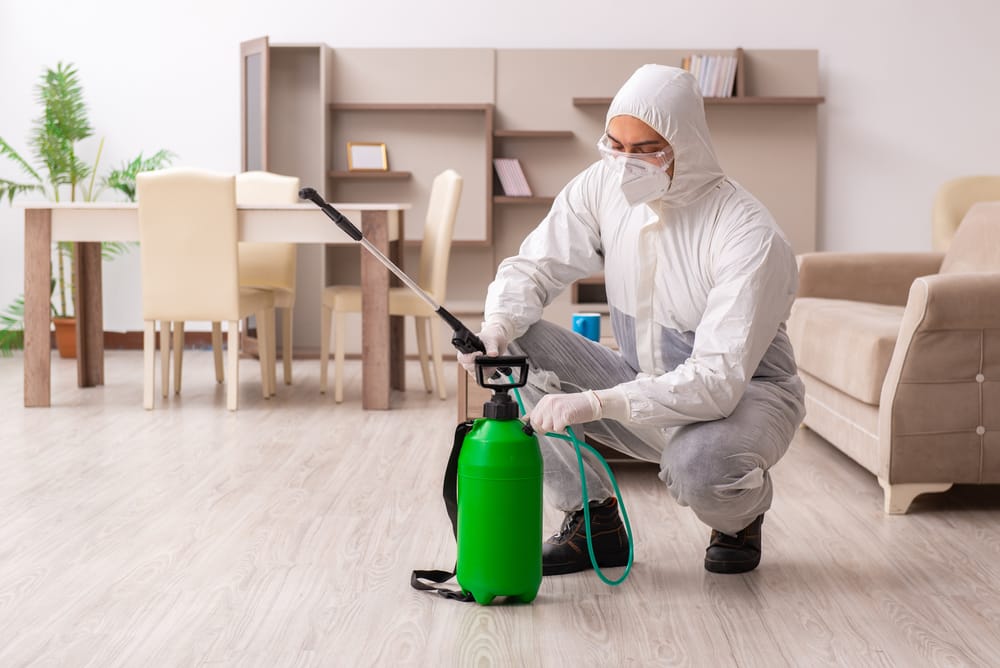
After cleaning air ducts and vents, companies apply antimicrobial products, such as biocides, to sanitize the ductwork. This treatment make certain that the cleaned duct system remains free from harmful bacteria and mildew, safeguarding indoor air quality and providing a clean, healthy environment for your home.
8. Seal the access points created for cleaning
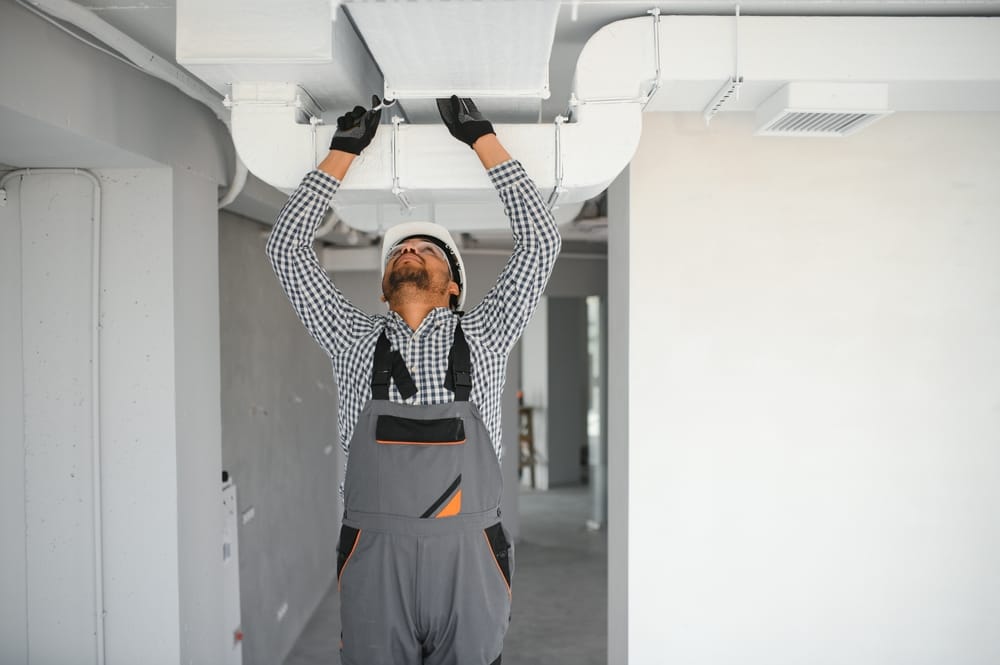
After air ducts are cleaned and sanitized, we carefully seal the access points to make sure that no debris enters the duct system. Certified professionals use specialized sealants and equipment to secure the ducts and vents, preventing future contamination. This step is essential to maintain a clean and efficient air duct system.
9. Conduct a final inspection
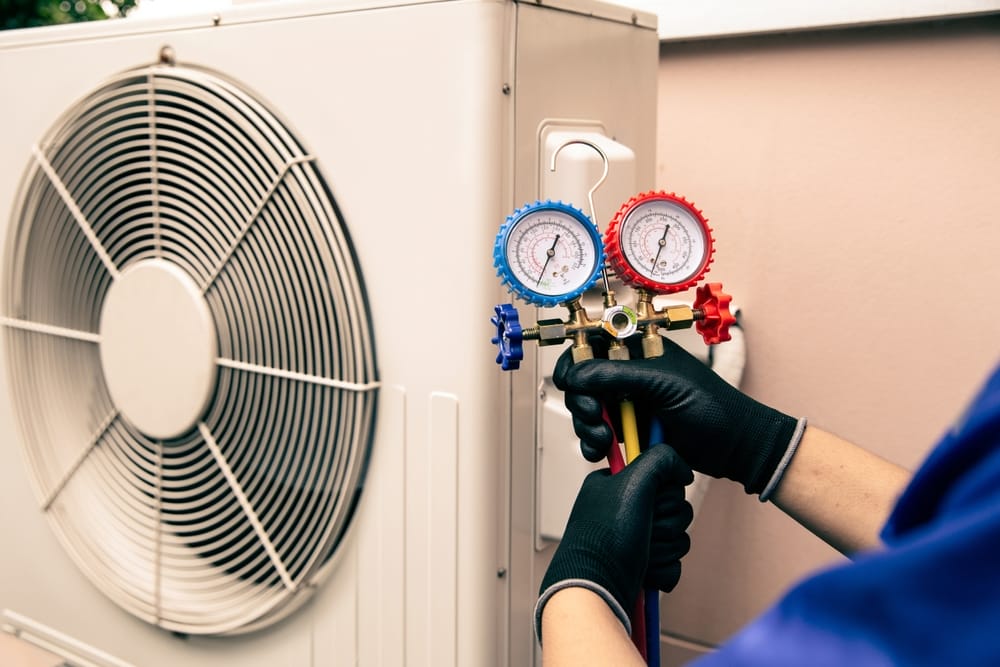
After your ducts have been cleaned, the service provider conducts a final inspection to make certain each duct and vent is thoroughly clean. This action confirms that the duct cleaning was successful, leaving your HVAC system in top condition and ensuring the air you breathe is fresh and clean.
10. Remove all protective coverings and ensure that the area is tidy up

To finish our job to clean air ducts effectively, we start removing and pick up all protective coverings that was placed to access air ducts. The area is then tidied up to assure a clean workspace, leaving your home in perfect condition.
11. Report and recommendations

After your ducts are cleaned, we provide a detailed report on the condition of your air ducts and vents. We also include EPA-compliant recommendations to maintain clean ducts and improve air quality. This report helps you find the best way to keep your system efficient and safe.
What Does a Professional Duct Cleaner Do?
At 1 Clean Air, we take pride in offering top-quality commercial duct cleaning services. Our highly trained technicians follow a detailed, thorough process to ensure your HVAC system is clean, efficient, and free from harmful contaminants.
When you choose our service, our technicians will start by inspecting your duct system to assess the level of buildup and any potential issues. Using advanced equipment, we create negative pressure to prevent dust and debris from circulating back into your business environment. Our team uses specialized agitation tools, such as brushes and air whips, to loosen and dislodge dirt, ensuring a deep clean of the entire system.
Next, our powerful vacuum system removes all dust and debris, while we also clean the vents to optimize air circulation throughout your commercial space. We take every step to ensure your business benefits from cleaner air, improved energy efficiency, and a healthier environment for employees and clients alike.
Ready to improve your business’s indoor air quality? Book your commercial duct cleaning service with us!
3 Key Components To a Cleaner Air Quality
To get cleaned ducts, we do need more than one, but four fundamentals categories to follow. The process of air duct cleaning can be better understood by examining its critical components:
1. Pipes Needs An Evaluation
The building’s ductwork undergoes a thorough inspection as the initial steps we previously saw in the article. The vent assessment, often facilitated by cameras and diagnostic tools, identifies dust accumulations and areas needing attention, setting the stage for effective cleaning.
2. Duct Cleaning Needs Specialized Equipment For The Job:
Specialized cleaning tools, such as powerful vacuums and brushes, are employed by the technician after the assessment. These tools are adept at dislodging and extracting debris from the air ducts and vents, crucial for maintaining clean air passages. The cleaning of air ducts do need the use of specialized equipment such as:
- Vacuuming;
- Brushes for duct cleaning;
- Air compressors.
- Air Whips
- Agitation Devices
- Access Tools
- Cleaning Chemicals
- Inspection Equipment
- Sealing Tools
- Safety Equipment
These tools help to efficiently remove dust and debris. Techniques like negative pressure and high-powered vacuuming are specifically designed to dislodge dust, ensuring it is then effectively collected and removed. This meticulous use of specialized tools guarantees that the cleaning process is comprehensive, accessing even the most challenging parts of the ductwork.
3. The Cleaner Technician Will Need Specific Tools:
Inspection tools, including cameras, play a vital role during the cleaning procedure. Technicians use these tools to guarantee comprehensive cleaning and to check for areas that might have been missed initially, ensuring the ducts are thoroughly cleaned. Each component is essential in the air duct cleaning process, ensuring it is thorough and beneficial for both health and efficiency in indoor environments. Read our article on this topic to know more about duct cleaning with cameras.
4. Let’s Work To Keep The Outlets Clean and Safe:
Technicians leverage imaging technology to inspect air ducts before and after cleaning, offering visual evidence of thoroughness. This confirm that all parts of the air duct system are addressed without damage, maintaining the structural integrity of the ductwork and the overall HVAC system.
Which Techniques and Procedures Do The Cleaning Process Needs?
Adherence to NADCA Standards
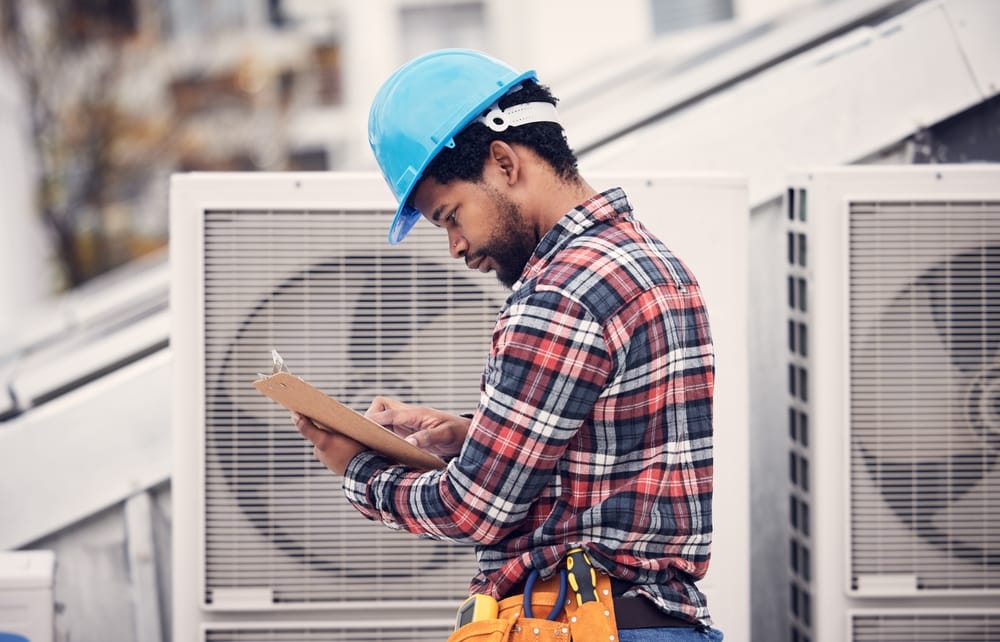
Professional duct cleaning services strictly follow the procedures established by the National Air Duct Cleaning Association (NADCA). These procedures include source-removal techniques and mandatory visual inspections. Adhering to these standards confirm that the duct cleaning is conducted safely and effectively.
Source-Removal Method for Thorough Cleaning
The source-removal method, advocated by the guidelines, is a rigorous cleaning technique. Dirt can be clogged. This being said, it do involves agitating the ducts to loosen that dirt and debris. It is then followed by an extraction, using a powerful vacuum system. This method is recognized as the most comprehensive approach to removing contaminants from HVAC systems.
Visual Inspections for Quality Assurance
Following the cleaning, technicians perform visual inspections to confirm the air ducts meet the association’s standards. These inspections provide clients with the assurance that their indoor air quality is improved and that their HVAC system is free from harmful accumulations.
NADCA Procedures Needs Following for Proper Cleaning of Ducts
Rigorous Duct Cleaning Techniques
The system cleaning needs to follow NADCA procedures. It stipulates that accredited contractors use specific source-removal techniques, involving manual cleaning and the use of compressed air tools. These guidelines are designed to make sure duct cleaning is performed to the highest standard, safeguarding air quality and the functionality of HVAC systems. Read our article on the topic if you wonder if duct cleaning can be done with compressed air.
Educational Requirements for Contractors
Accredited contractors must demonstrate a thorough understanding of HVAC systems and the appropriate cleaning methods. This knowledge is vital for handling different types of ductwork and addressing various cleaning challenges effectively.
Importance of Visual Inspections
Visual inspections are integral to relevant procedures, performed both before and after the cleaning. These inspections ensure accountability and transparency, providing clients with confidence that they are receiving a quality service that extends the life of their HVAC system and enhances air quality.
Conclusion On The Process Of Cleaning The System
Air duct cleaning is a meticulous process that includes diagnostic inspections and the use of specialized tools such as vacuums and brushes, ensuring comprehensive cleaning. Adherence to the organisation’s standards guarantees system integrity and optimal performance. Cleaning ducts can be beneficial for the lifespan of your hvac. Full replacement of system (or parts) can be prevent by knowing the duct cleaning process. Feel free to contact us by phone or email for your duct cleaning needs!
FAQ
Will It Remove Odors?
Remember that vent cleaning will not eliminate odors coming from your hvac system and improve indoor air quality by itself. It depends on the situation. For example, if your ducts only have a bit of dust, it won’t change a lot. But if you have animals feces in your ducts, it will definitely helps! If so, yes the air will seem cleaner. Dirt in the duct will be the turing point on which it will remove odors or not.
How often should I get my ducts cleaned?
It is generally recommended to have your ducts cleaned every 3-5 years, depending on the environment of your commercial space. If your building experiences higher levels of dust, allergens, or has had recent renovations, you might need to clean the ducts more frequently to maintain optimal air quality.
Will duct cleaning improve air quality in my business?
Yes, professional duct cleaning removes accumulated dust, mold, and allergens from the ductwork, which can significantly improve indoor air quality. This is particularly important in commercial spaces where employees and customers might have sensitivities to pollutants.
How long does the duct cleaning process take?
The duration of the duct cleaning process depends on the size of the building and the complexity of the HVAC system. On average, it can take anywhere from a few hours to a full day. At 1 Clean Air, we provide an estimated time frame before starting, ensuring minimal disruption to your business operations.
For more details or to schedule a service, visit our commercial duct cleaning page.
Conclusion
Commercial duct cleaning offers several key benefits that can significantly improve the environment and efficiency of your business. Regular duct cleaning ensures better indoor air quality, reducing allergens, dust, and contaminants that could affect employees and customers. Cleaner ducts also enhance the efficiency of your HVAC system, allowing it to run more smoothly and lowering energy costs. Additionally, maintaining clean ducts helps prolong the lifespan of your HVAC system, reducing the need for costly repairs or replacements.
Investing in professional duct cleaning creates a healthier, more efficient workspace, which is beneficial for both the comfort and productivity of everyone inside. To experience these benefits for your commercial space, consider scheduling a service with 1 Clean Air today. Learn more here.

Simple, easy and efficient!
We'd love to work with you!
Ontario Head Office
Ottawa
Phone: 613-612-4828
Email: service@1cleanair.ca
343 Preston St., Ottawa, ON K1S 1N4
Quebec Head Office
Gatineau
Phone: 819-664-2444
Email: service@1cleanair.ca
95 de la Technologie Blvd, Gatineau, QC J8Z 3G4

